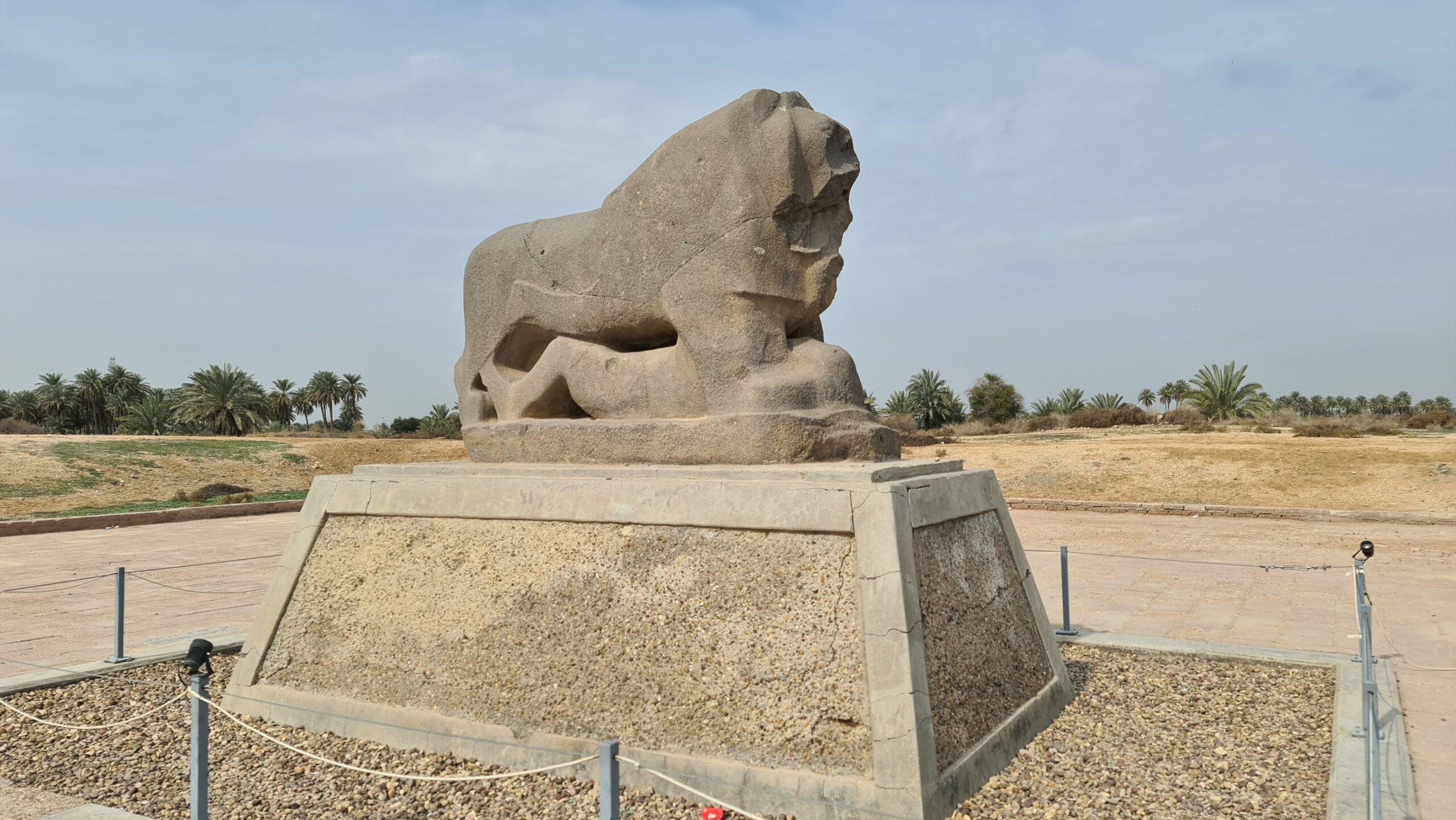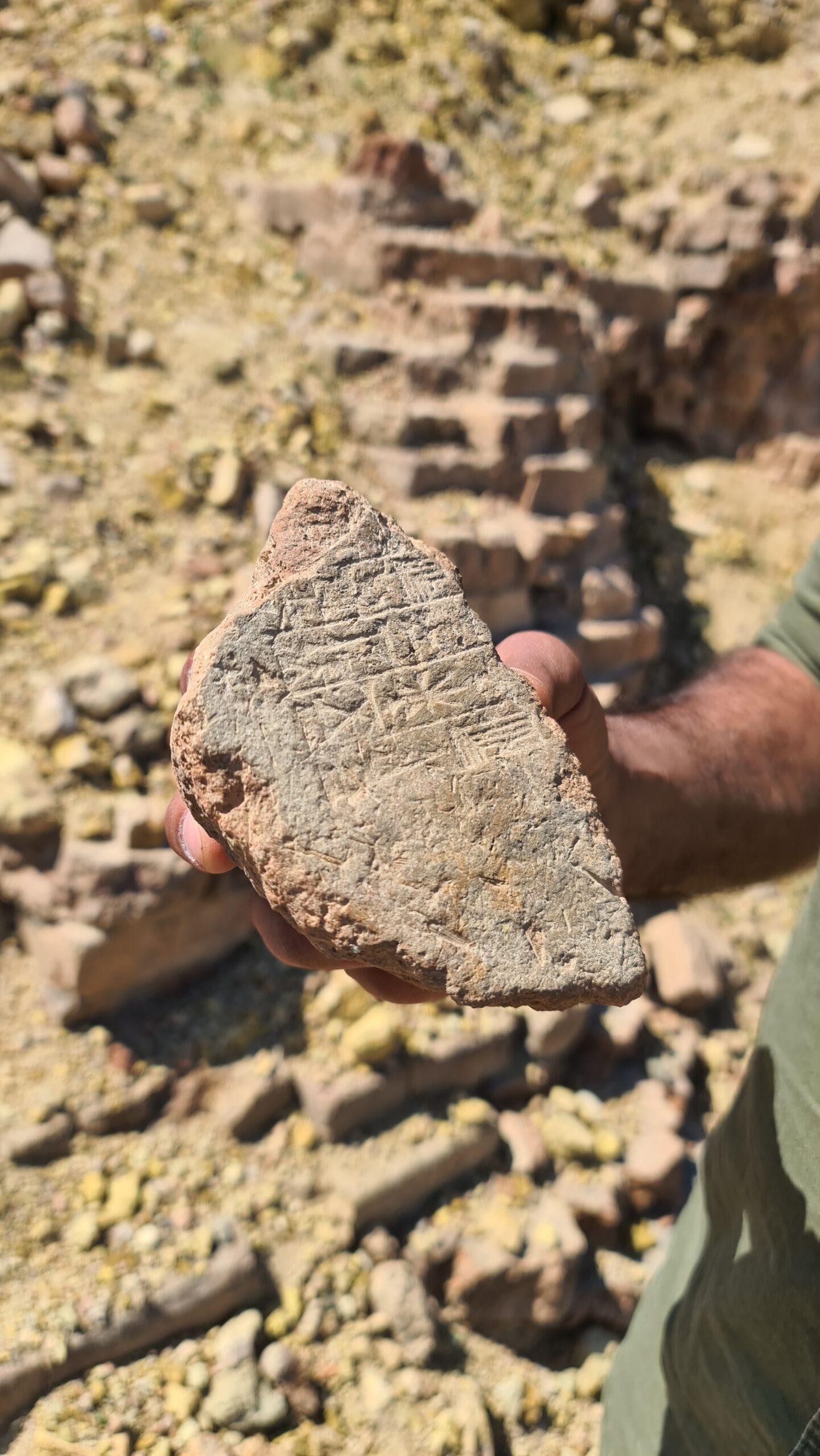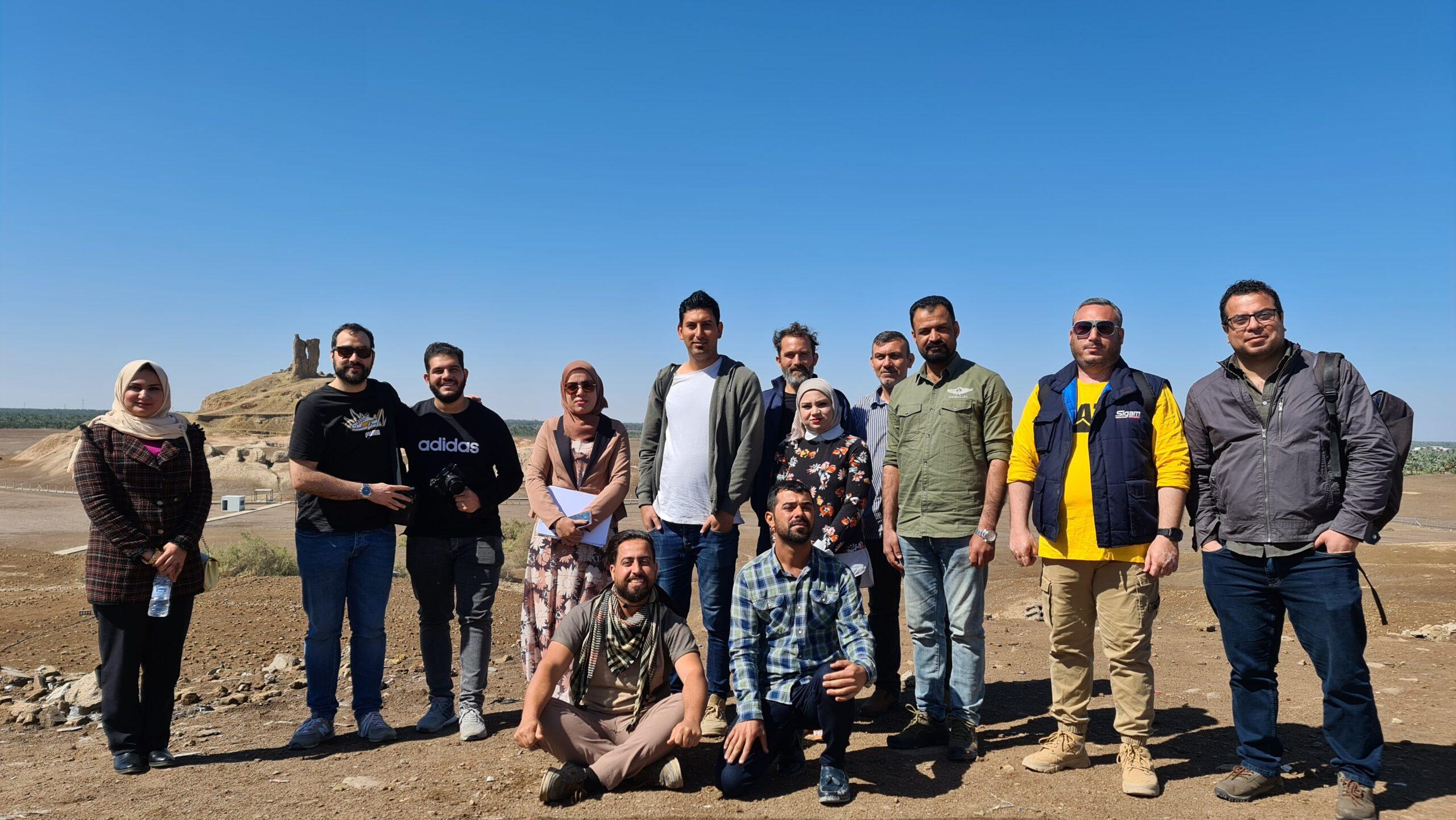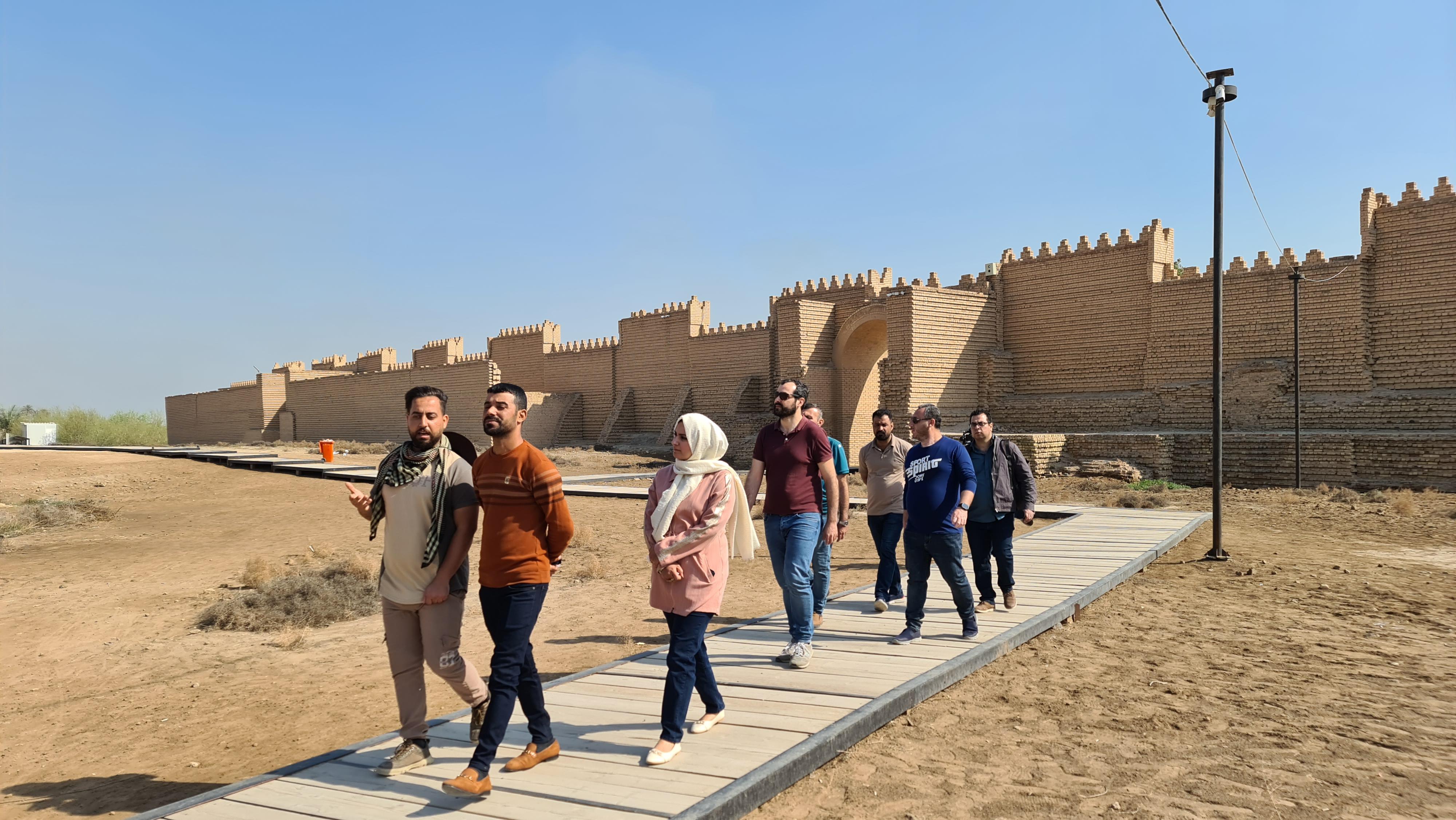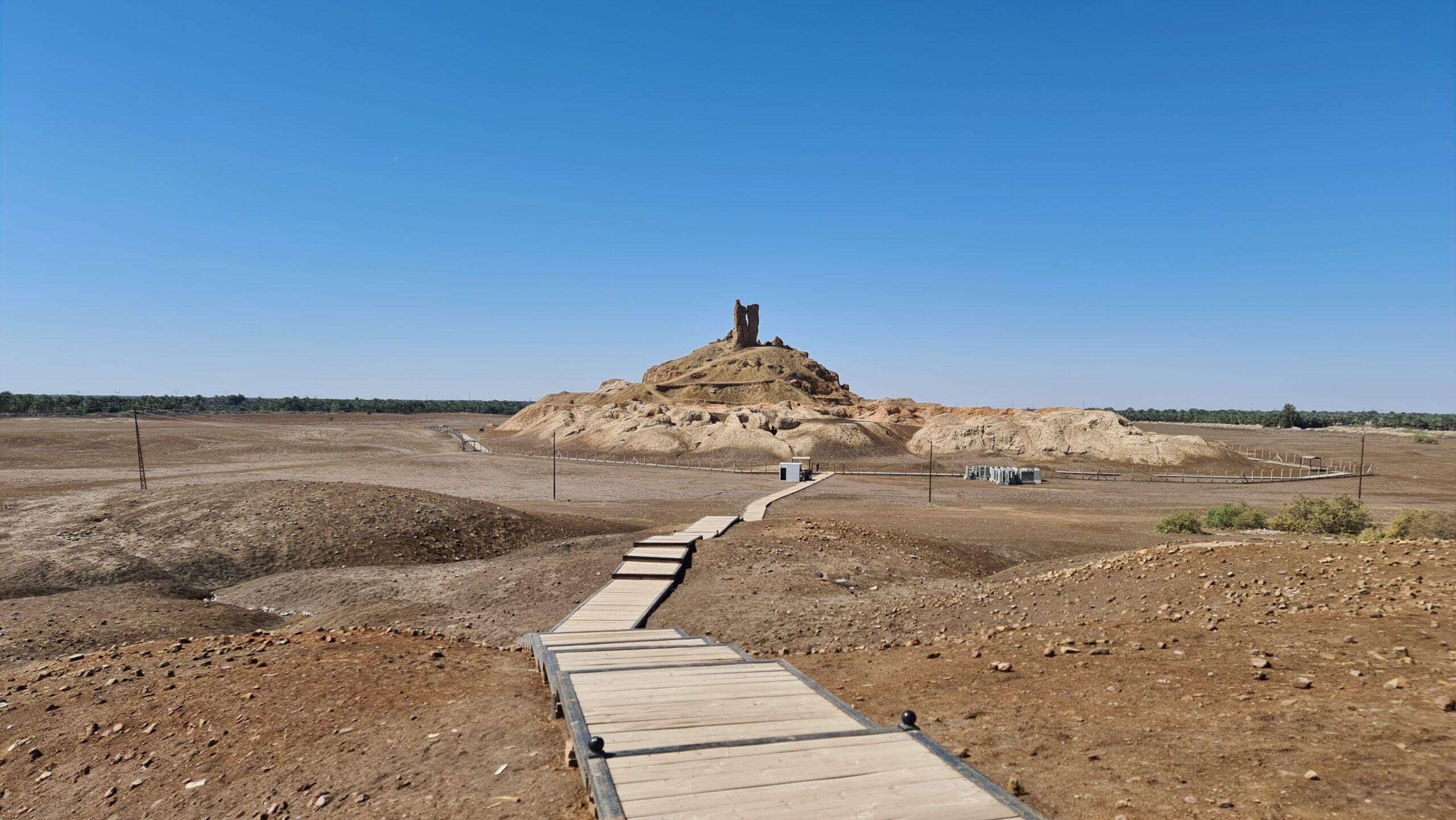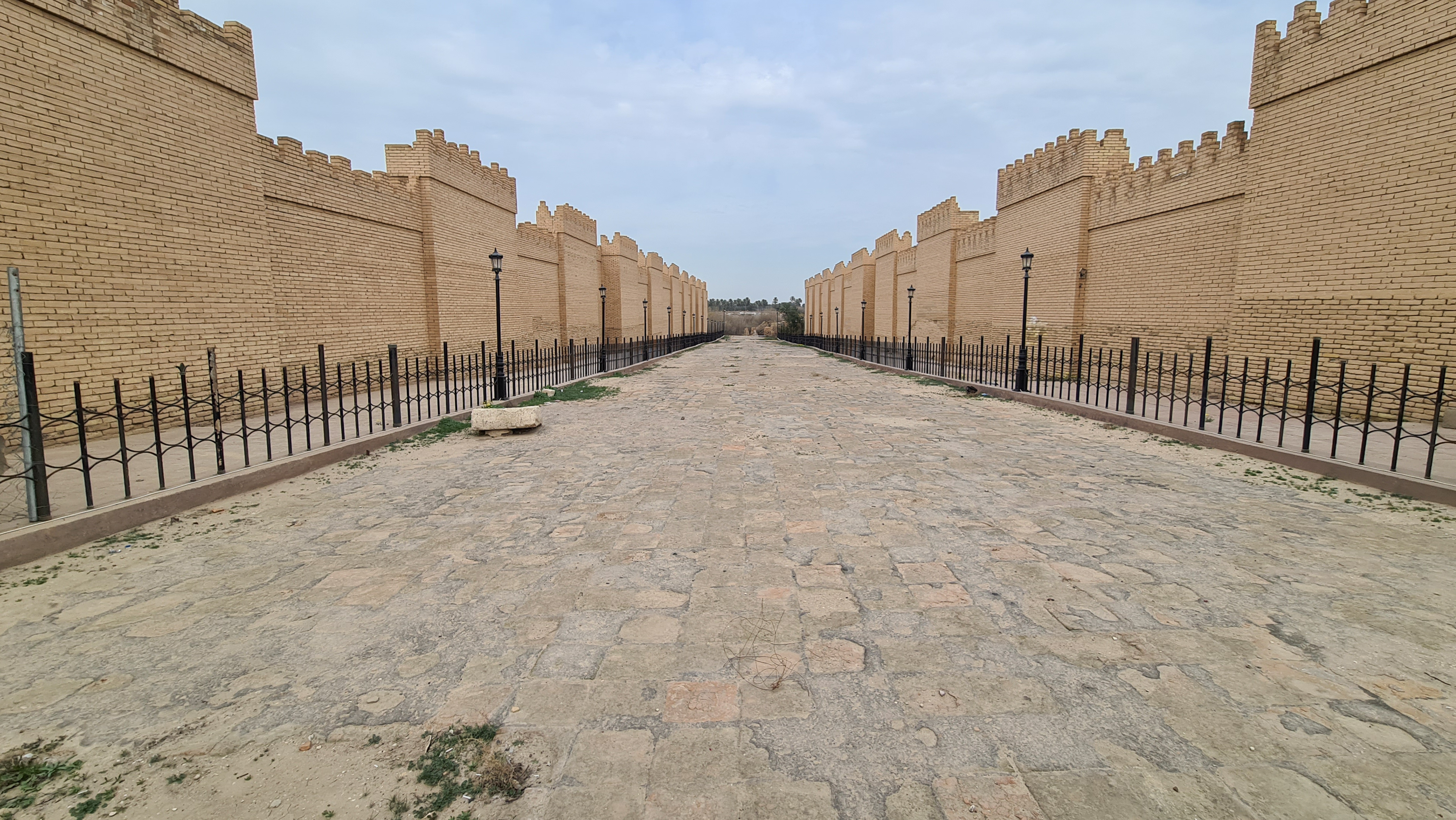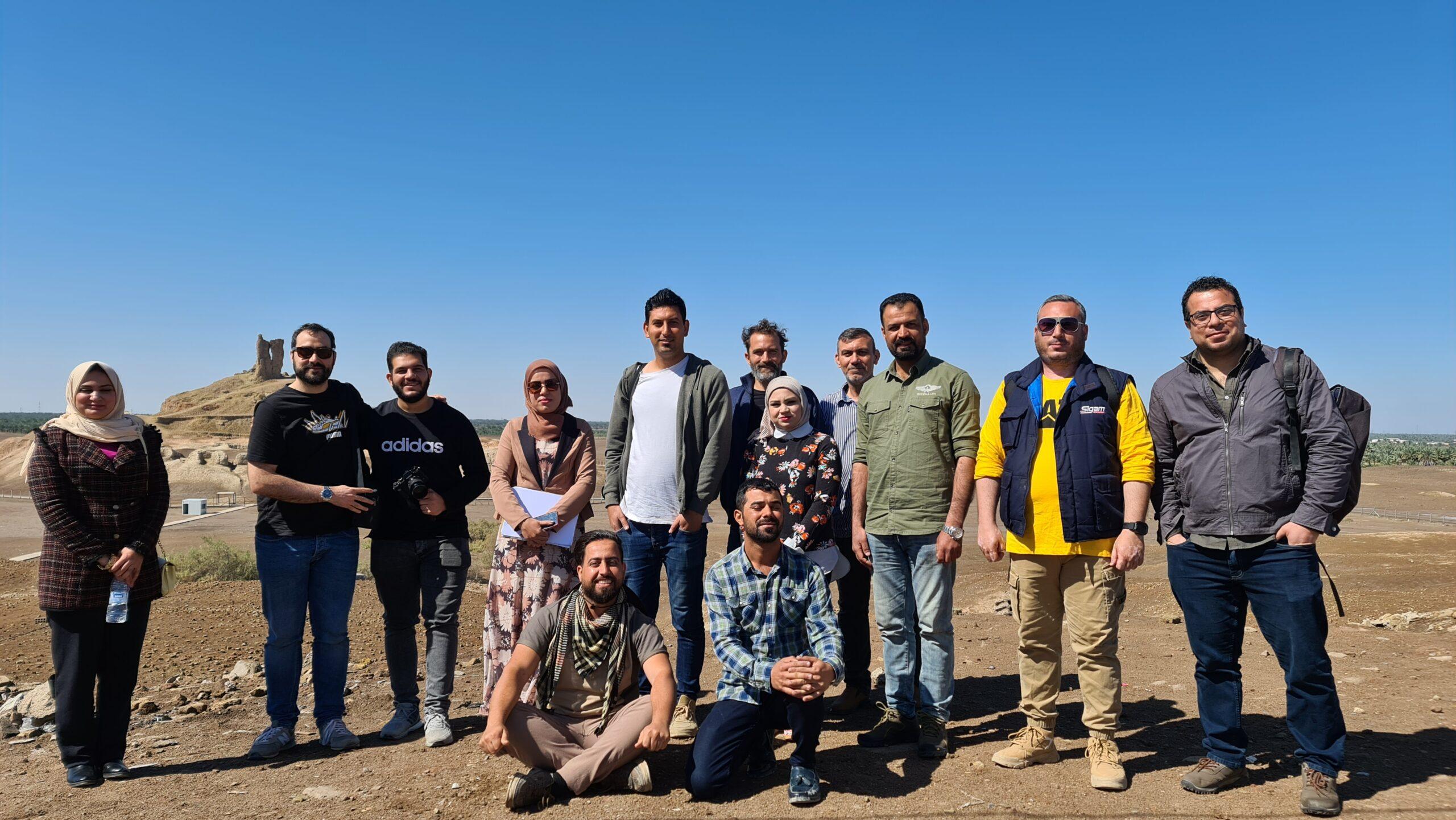Iraq Heritage
Babylon
Babylon is one of the most famous cities of antiquity, and since 2019 is inscribed on UNESCO’s World Heritage List. From the early 2nd millennium to the early 1st millennium BCE, Babylon was the capital city of southern Mesopotamia (Babylonia); and later, in the 7th and 6th centuries BCE, it was the capital of the Neo-Babylonian (or Chaldean) empire.
The ruins of Babylon lie near the modern town of Al-Hillah, Babil Governatorate, Iraq, on the Euphrates river, about 85 kilometers south of Baghdad, and comprise a large tell of broken mud-brick buildings and debris. Only a small portion of the ancient city has been excavated; the present site contains a number of prominent mounds covering an area of about 2×1 kilometer, oriented north to south, along the Euphrates to the west. Originally the river roughly bisected the city, but the course of the river has since shifted so that most of the ruins of the former western part of the city are now inundated. Some portions of the city wall to the west of the river also remain.
The spelling Babylon is the Latin representation of Greek Babylṓn, from the native Bāb-ilim, “the gate of the god”. The cuneiform spelling was KA2.DINGIR.RAki, where the sign KA2 is the logogram for “gate”, DINGIR + RA means “god” (followed by the genitive suffix -ak), and the final KI is the determinative indicating that the previous signs are to be understood as a place name. In the Hebrew Bible, the name appears as Babel (Hebrew בלֶ בָּ ; in Arabic: بابل Bābil), interpreted in the Book of Genesis to mean “confusion”, from the verb bilbél, “to confuse”.
The main sources of information about Babylon are of the most varied nature, including: the excavation of the ancient site; references in cuneiform texts found elsewhere in Mesopotamia—the first attested mention of Babylon appears on a clay tablet dating to the reign of the Akkadian Empire ruler Šar-kali-šarri, in the late 3rd millennium BCE; references in the Bible and descriptions in other classical writing—especially by Herodotus—and second-hand descriptions—citing the work of Ctesias and Berossus. All of them present an incomplete and sometimes contradictory picture of the ancient city.
Next Workshop
Read the latest news from the project.
